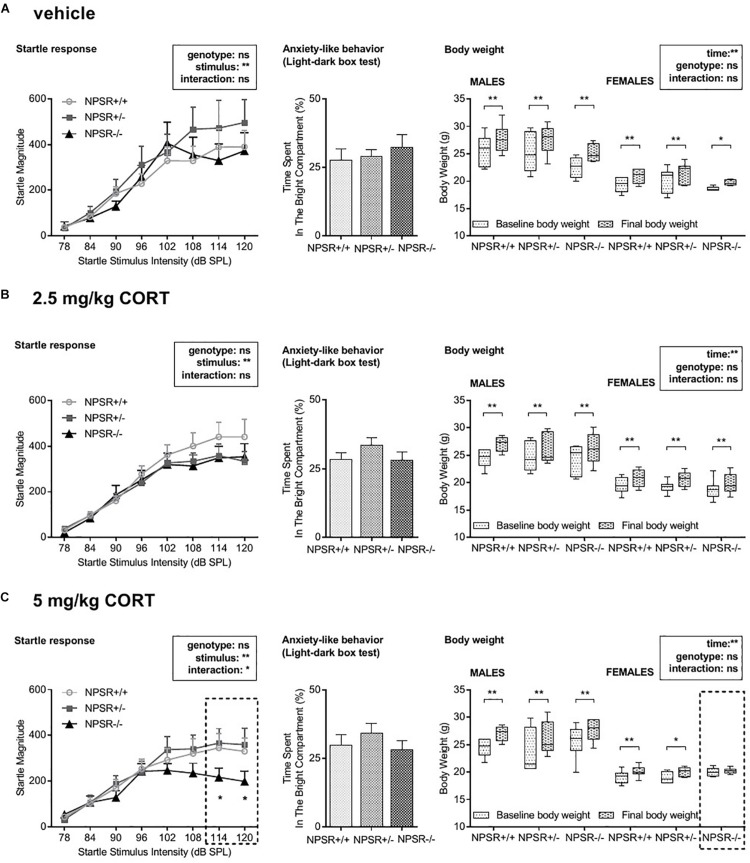FIGURE 5.
Acoustic startle magnitudes (left panel), anxiety-like behavior in the light–dark box test (middle panel), and body weight gain (right panel). (A) The magnitude of the acoustic startle response was generally dependent on the startle stimulus intensity. Genotype and CORT treatment had no effects except in 5 mg/kg CORT-treated NPSR−/− mice, in which the startle response to high stimulus intensities was impaired. (B) Neither CORT treatment nor genotype affected anxiety-like behavior in the light–dark box. (C) Male mice had generally more body weight gain than females. During the experiment, body weight was increased independently of genotype and treatment except for 5 mg/kg CORT-treated NPSR −/− female mice. Group sizes: NPSR +/+ : n = 54; NPSR+/−: n = 50; NPSR−/−: n = 40. Data are illustrated with bar and line diagrams (means + SEMs; left and middle panel) or box plots (median, quartiles) and Tukey’s whiskers (right panel). *p < 0.05; **p < 0.01; post hoc Holm-Sidak’s comparisons after ANOVA.

